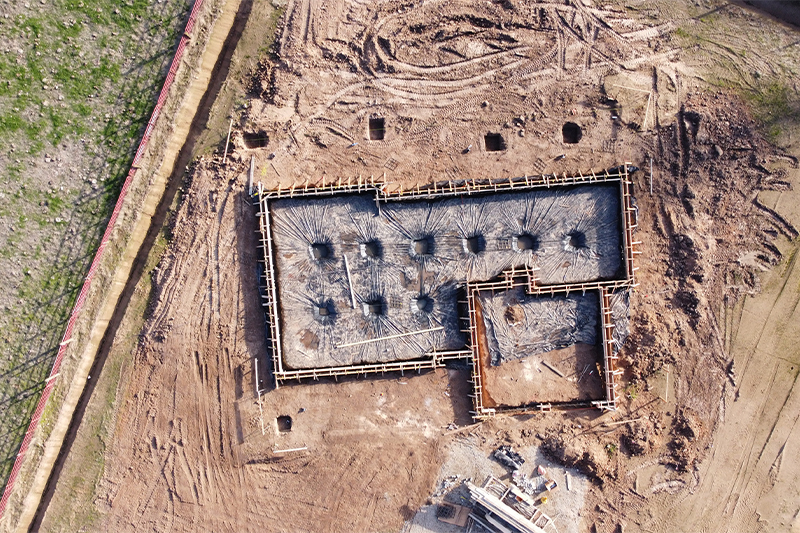
The Key to Thriving Amidst Disruption
Let’s get right into mastering operational resilience: a deep dive into key components. In the last blog, we discussed the importance of Operational Resilience planning. It is not a replacement for Business Continuity or Risk Management. Instead, it more closely aligns the two to support the ongoing plasticity of today’s businesses while enabling them to recover quickly from crisis events. Indeed, Operational Resilience planning aligns with the overall mission of Business Resilience, which we will dive deeper into in a future blog. If you are confused about the difference between the two concepts, we encourage you to check our article on Decoding Business And Operational Resilience: Unveiling The Key Differences.
In today’s dynamic business environment, operational resilience planning is a cornerstone of success. From natural disasters to cyberattacks, unforeseen disruptions can wreak havoc on even the most well-established organizations. However, businesses can survive and thrive in adversity by understanding the principles and practices of operational resilience planning. This comprehensive quick guide delves deep into operational resilience planning, offering valuable insights and strategies aligned with its key components. Think of it as a Business Continuity Strategy on steroids.

The Foundation of Operational Resilience Planning
Operational resilience is a vital aspect of modern business strategy; it refers to an organization’s capacity to adapt, endure, and sustain critical operations during unexpected disruptions or crises. It encompasses risk assessment, mitigation strategies, response and recovery plans, and continuous testing and training to ensure business continuity. It is a business continuity strategy. Operational resilience helps companies minimize downtime. Additionally, it helps maintain customer trust, meet regulatory compliance, making it a cornerstone of effective risk management and long-term success in today’s dynamic business landscape. It’s simply a good resilience and business continuity strategy.
Accordingly, it matters significantly to businesses due to its pivotal role in mitigating risks, ensuring business continuity, and enhancing regulatory compliance. Organizations safeguard their critical operations and gain a competitive edge by proactively addressing potential disruptions through comprehensive operational resilience strategies. Operational resilience supports risk management, crisis preparedness, and adaptability, fostering customer trust and demonstrating a commitment to stability. In an era of increased uncertainty and regulatory scrutiny, embracing operational resilience is essential for businesses to thrive and maintain their reputation as resilient industry leaders.

Understanding Operational Resilience
Operational resilience is the ability of an organization to continue its critical functions and services in the face of various disruptions, such as natural disasters, cyberattacks, supply chain interruptions, and regulatory changes. To achieve operational resilience, organizations need to focus on several key components:
- Risk Assessment,
- Mitigation Strategies,
- Response and Recovery Plans and
- Testing and training.
As a business continuity strategy, operational resilience combines an understanding of risk with the tools to respond and recover from crisis events quickly. Read our last blog on Unlocking the Power of Operational Resilience Planning, it will help level-set the deeper dive provided in this article.

Key Component 1: Risk Assessment
To effectively prepare for disruptions, identify and assess the risks your organization faces. This involves evaluating potential threats and vulnerabilities, both internal and external. Conducting a thorough risk assessment will help you prioritize your resilience efforts and allocate resources where they are most needed.
So, mapping critical business services is a foundational step in Operational Resilience Planning. This step is where organizations define the core functions and process essential for their continued operation. This process involves a comprehensive assessment of dependencies, both internal and external, to determine how various components and systems are interconnected. By pinpointing these critical business services, organizations can prioritize resource allocation risk assessment and develop targeted mitigation, response, and recovery strategies to ensure the uninterrupted delivery of these services during disruptions. This mapping helps organizations better understand their vulnerabilities and strengthens their ability to proactively address potential threats and maintain operational continuity in an ever-evolving business landscape.

Key Component 2: Mitigation Strategies
Once you’ve identified the risks, developing mitigation strategies is next. This business continuity strategy is designed to reduce the impact of disruptions and prevent them from escalating into major crises. Mitigation involves strengthening your infrastructure, diversifying suppliers, implementing cybersecurity measures, and more.
So, prioritize the risks based on their potential severity and likelihood of occurrence. With this information, mitigation strategies can be designed and tailored to each identified risk, including diversifying supply chains, enhancing cybersecurity measures, creating redundancy in critical systems, and implementing robust backup and recovery procedures. Ensure these strategies are well-documented and integrated into the organization’s resilience framework. Regularly review and update these strategies to adapt to changing threats and technological advancements, fortifying the organization’s ability to withstand disruptions and maintain essential business operations.

Key Component 3: Response and Recovery Plans
Inevitably, disruptions will occur despite your best efforts at mitigation. This is where well-defined response and recovery plans come into play. These plans outline the steps your organization should take during a crisis to minimize downtime, protect assets, and ensure the safety of employees and customers. They also detail returning to normal operations once the crisis has passed.
Creating response and recovery plans for Operational Resilience requires meticulous understanding of critical business services. Initiate by identifying potential disruptions and conducting comprehensive risk assessments to prioritize risks based on severity and likelihood. Then, develop tailored response plans specifying detailed steps and roles for addressing each identified risk, focusing on swift and effective containment, communication, and resource allocation during crises. Recovery plans should include the process for returning to normal operations, including resource reintegration, damage assessment, and continuous improvement. Ensure these plans are regularly tested, refined, and aligned with evolving threats and organizational changes, solidifying the organization’s capacity to respond swiftly and recover effectively from various disruptions while enhancing its operational resilience.

Key Component 4: Testing and Training
Regular testing and training are crucial but often overlooked aspects of operational resilience. Without practice, your plans may prove ineffective when faced with a real crisis. During a disruption, regular drills and simulations help your team become familiar with their roles and responsibilities. It also allows you to identify weaknesses in your plans and make necessary adjustments.
Start by designing comprehensive testing scenarios that simulate disruptive events, ensuring they align with identified risks and vulnerabilities. Execute these tests regularly to evaluate the effectiveness of response and recovery plans, identify weaknesses, and refine strategies accordingly. Additionally, training programs should be developed to educate employees on their roles during disruptions, emphasizing the importance of their contributions to operational resilience. This training should encompass crisis communication, resource allocation, and incident management, with periodic drills and exercises to reinforce learning and assess readiness. Regularly reviewing and updating testing and training programs ensures that the organization remains agile and prepared to effectively navigate the dynamic landscape of operational resilience.

Summing It All Up
In today’s volatile business environment, operational resilience is not a luxury but a necessity. Your organization can better navigate its challenges by mastering risk assessment, mitigation strategies, response and recovery plans, and testing and training. Operational resilience isn’t just about surviving disruptions; it’s about thriving in the face of adversity and emerging more substantial on the other side. Make operational resilience a top priority for your organization, and you’ll be better prepared for the future. So, now you have the foundational elements for mastering operational resilience: a deep dive into key components.
Calling All Resilience Champions!
Don’t miss a beat with Disaster Empire – your gateway to groundbreaking insights and exclusive content.
Get ahead of the game by signing up NOW! Be an insider and be the FIRST to access our power-packed blog posts every Tuesday.
Unleash a world of knowledge with each blog – we’ve got it all! We’ve got your back from embedded links to source materials, captivating articles, eye-opening videos, must-read books, and top-notch training! Click on the blue link to dive into an ocean of valuable resources.
Take resilience to new heights with our captivating podcast! Featuring exclusive interviews with thought leaders and innovators, this is YOUR ticket to inspiration and progress! Available on YouTube and YouTube Music for your ultimate viewing and listening pleasure.
Don’t wait! The excitement starts every Tuesday with our blog posts, and we’re not done yet – every Thursday, a fresh, invigorating podcast awaits you.
Join our growing community of change-makers and conquer challenges with Disaster Empire! Together, we’ll shape a resilient future!
